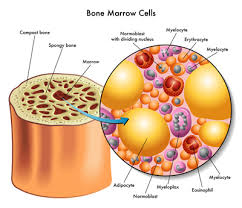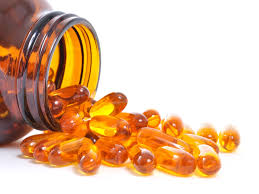
Recently Diagnosed or Relapsed? Stop Looking For a Miracle Cure, and Use Evidence-Based Therapies To Enhance Your Treatment and Prolong Your Remission
Multiple Myeloma an incurable disease, but I have spent the last 25 years in remission using a blend of conventional oncology and evidence-based nutrition, supplementation, and lifestyle therapies from peer-reviewed studies that your oncologist probably hasn't told you about.
Click the orange button to the right to learn more about what you can start doing today.
- You are here:
- Home »
- Blog »
- Multiple Myeloma »
- Myeloma- Normalize K/L Ratio, Plasma cells
Myeloma- Normalize K/L Ratio, Plasma cells

Many, if not all pre-myeloma as well as full myeloma patients would love to normalize their K/L ratio, reduce their plasma cells growing out-of-control in their bone marrow and improve impaired kidney function through non-toxic therapies.
According to the second study linked and excerpted below, a MM patient was able to normalize their K/L ratio and reduce their plasma cells through the non-toxic therapies listed (probiotic, vitamin D, etc.)
According to the third study linked and excerpted below, another MM patient was able to normalize their K/L ratio and also stabilize their blood cancer by supplementing curcumin.
No one would like to believe that non-toxic therapies such as nutrition and supplements (curcumin, vitamin D and a probiotic) can normalize K/L ratio and plasma cells in myeloma patients more than I would. However, the closest I can come is believing that there is only a small percentage of pre and full MM patients who respond so well to evidence-based but non-conventional therapies.
While I’m convinced that complementary and integrative therapies will help each MM patient/survivor to manage both their blood cancer as well as the many short, long-term and late stage side effects, still believe that patients will need, at least a little toxicity to manage their MM at some point in their lives as myeloma survivors.
To learn more about plasmapheresis- click now
Have you been diagnosed with either pre-myeloma (SBP, MGUS or SMM) or full MM (stage I,II,III)? If you would like to learn more about evidenced complementary and integrative therapies scroll down the page, post a question or a comment and I will reply to you ASAP.
Thank you,
David Emerson
- MM Survivor
- MM Cancer Coach
- Director PeopleBeatingCancer
[Microbial production of chondroitin sulfate: a review]
“Chondroitin sulfate (CS) is the typical sulfation glycosaminoglycan and widely applied in the industries of pharmaceutical, health products and cosmetic for its peculiar properties. CS is the main component of cartilage proteoglycans in animal and capsular polysaccharide in a few bacteria.
CS can be extracted from animal sources and produced via microbial fermentation. In this article, development of chondroitin sulfate by fermentation, biosynthesis and regulating mechanisms of CS in bacteria are described. Furthermore, prospect and tendency of chondroitin sulfate from bacterial fermentation are addressed.”
Use of an Extremely Biodiverse Probiotic and a Supplement Based on Microbial Chondroitin Sulfate is Associated with a Significant Decrease of Serum Free Kappa Light Chains as well as a Trend Toward Normalization of Kappa/Lambda Ratio and of Plasma Cell Bone Marrow Infiltration in a Case of Multiple Myeloma
“We describe the case of a 71-year-old woman with multiple myeloma associated with severe chronic renal insufficiency who, since October 2018, assumed a-
- novel, extremely biodiverse, probiotic and
- a supplement based on microbial chondroitin sulfate,
- vitamin D3 and
- ultrapure phosphatidylcholine;
such a nutritional regimen was associated with-
- a dramatic decrease of serum free Kappa light chains (from 2,190 to a minimum of 119.40 mg/L)
- as well as a trend toward normalization of Kappa/Lambda ratio (from 187 to a minimum of 3.16)
- and of plasma cell bone marrow infiltration (from 20 to 5%)…
The patient, a woman born in 1948, had been diagnosed with monoclonal gammopathy in 2010; in 2012 she developed acute renal insufficiency treated with dialysis and plasmapheresis…
… a bone marrow biopsy of the posterior iliac crest confirmed a diagnosis of multiple myeloma with monotypical plasma cell bone marrow infiltration accounting for 20% of total cells. Study of serum free light chains showed significant alteration of the Kappa/Lambda ratio (free Kappa: 2,190 mg/L. Free Lambda: 11.7 mg/L. Ratio Kappa/Lambda: 187) that was consistent with the severity of the oncohematological disease according to the updated criteria for the diagnosis of multiple myeloma (Rajkumar et al., 2014)…
Following hospitalization in October 2018, the patient opted for a complementary approach to her condition consisting in-
- consumption of 50 mL, twice a day, of an extremely biodiverse probiotic drink obtained by fermentation of bovine milk and colostrum;
- in addition, the Medical Doctor supervising the patient, in October 2018 begun administering 0.2 mL per week of a novel immune-modulating supplement based on microbial chondroitin sulfate,
- vitamin D3
- and ultrapure phosphatidylcholine (Ruggiero, 2018).
A laboratory exam performed three months later (January 10, 2019) demonstrated-
- a 95% decrease of serum free Kappa light chains that went from 2,190 mg/L (October 2018) to 119.40 mg/L.
- Also the ratio Kappa/Lambda showed a trend toward normalization decreasing from 187 (October 2018) to 11.10 (January 2019).
- Consistent with the significant improvement of the oncohematological picture, also the renal function improved, albeit to a lesser extent with Creatinine decreasing from 1.76 mg/dL (October 2018) to 1.61 mg/dL (January 2019); glomerular filtrate increased from 28 mL/min (October 2018) to 34 mL/min (January 2019)…
Consistent with these results, a bone marrow aspiration at the sternum performed on April 26, 2019…evidenced plasma cell infiltration of 5% that is a very significant reduction in comparison to the results observed before implementing the nutritional approach described above; thus, plasma cell bone marrow infiltration was 20% in October 2018…
It is tempting to speculate that the wide-range of effects on the immune system deriving from the extreme biodiversity of the probiotic drink assumed by the patient was synergistic with the effects of the supplement based on microbial chondroitin sulfate, vitamin D3 and ultrapure phosphatidylcholine as they are described in two recent papers (Ruggiero, 2018; Ruggiero and Pacini, 2018).
Such a synergism may well be at work at the molecular level, for example by integrating different mechanisms responsible for DNA repair that counteract DNA instability, a common trait of cancer and other conditions.
Long-term stabilisation of myeloma with curcumin
“Case presentation-
…Within 15 months, the patient had rapidly progressed to ISS stage 3 myeloma with M-protein 49 g/L, urinary protein 1.3 g/24-hour, Bence-Jones protein 1.0 g/24-hour, Hb 9.7 g/dL and increasing back pain. She initially declined antimyeloma treatment but 6 months later, following vertebral collapse at T5 and T12, started cyclophosphamide, thalidomide and dexamethasone (CTD) treatment.
However, after a week, the patient was admitted with idiosyncratic syndrome including hyponatraemia, a fall in albumin and worsening of blood counts. She received red cell transfusion and her electrolyte abnormalities were carefully corrected…
The patient achieved a partial response with CTD retreatment over the course of 17 cycles (M-protein 13 g/L) with no further episodes of idiosyncratic syndrome. However, attempts to harvest stem cells in February 2011 and again there months later, both failed. By then, her M-protein had risen to 24 g/L and the patient was too neutropenic to be considered for a clinical trial.
At this point, the patient began a daily regime of oral curcumin complexed with bioperine (to aid absorption), as a single dose of 8 g each evening on an empty stomach. A few months later, she also embarked on a once-weekly course of hyperbaric oxygen therapy (90 min at 2 ATA) which she has maintained ever since.
Her paraprotein levels gradually declined to a nadir of 13 g/L, her blood counts steadily improved and there was no evidence of further progressive lytic bone disease…
Outcome and follow-up-
The patient continues to take oral curcumin 8 g daily without further antimyeloma treatment. Over the last 60 months, her myeloma has remained stable with minimal fluctuation in paraprotein level, her blood counts lie within the normal range and she has maintained good quality of life throughout this period…
To the best of our knowledge, this is the first report in which curcumin has demonstrated an objective response in progressive disease in the absence of conventional treatment…
Another study examined its effects in preventing the progression of MGUS and smouldering myeloma to myeloma.14 ,15 The results showed that curcumin exerted a trace of biological activity with modest decreases in free light chain and paraprotein levels and a reduction in a marker of bone resorption with curcumin treatment, suggesting the therapeutic potential of curcumin in MGUS and smouldering myeloma. However, more studies are needed to address this further…”



